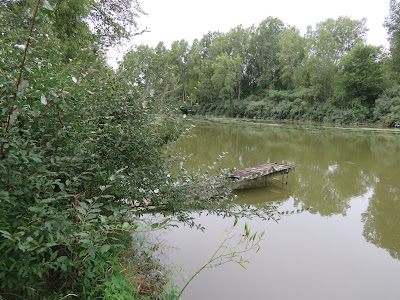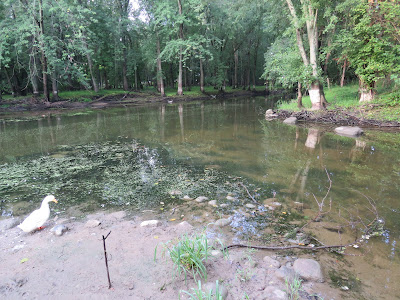On this last day of astronomical summer, I’m hiking with wife, Caroline, dog, Riley and friends at Hall’s Lake Natural Area in western Isabella County. Combining three of Chippewa Watershed Conservancy preserves, this 170-acre property is located along the eastern shore of 68-acre Hall’s Lake, near the village of Remus. The temperatures are in the mid 70’s under partly sunny skies with a refreshing breeze as we follow an earthen trail through a dense woodland where the damp, leaf litter reveals dozens of large, yellow-orange Fly Agaric mushrooms. This mushroom is both poisonous and psychoactive to humans. Symptoms of poisoning include nausea, vomiting, dizziness, hallucinations, involuntary movements, delirium and seizures. In northern climates, reindeer go to great lengths to seek out this hallucinogenic mushroom. Eating the fungi makes them behave drunkenly, run about aimlessly and make strange noises. Herders in Europe and Asia have long collected reindeer urine as a safer way of taking this hallucinogen. The common name, Fly Agaric is a reference to the using this mushroom as an insecticide. In some European countries caps are crumbled up and placed in saucers of milk to attract house flies. As flies drink the spiked milk, they become drowsy, collapse and die. Other fungi I notice nearby include a cluster of Honey Mushrooms that are best eaten after cooking and Coral Mushrooms that can be eaten raw, so I sample a small piece. As the trail approaches the lake, amphibians catch my eye including a 1-inch American Toad and a 3-inch Leopard Frog. Further ahead, I come upon an ornate, grape-size Oak apple gall that had fallen to the ground from an overhead tree (stock photo). This gall contains the larva of a wasp (stock photo) that feeds on inner tissue before pupating into an adult and breaking out. Arriving at the west trailhead, I look over at Hall’s Lake shoreline, see this wonderful preserve and reflect on the large amount of time, effort and financial resources it took by property owners in partnership with the Conservancy to make it a reality. Turning around and heading back to the car, I pause to observe a small white sphere moving over the leaf litter. Upon closer look, I see it’s a 1-inch, female Wolf Spider towing a silk sac full of 100 or so eggs. Once hatched, these tiny babies raise their abdomen and shoot out a small string of silk. When done correctly, this silk catches in the breeze and carries the babies off. Scientists think they do this to avoid competition with other siblings.
Orb of the earth
Star of the day
Your path is sure
You do not stray
Solstice to solstice
Halfway there
Summer has set
Chill in the air
Sustainer of life
Warming sphere
Sun of autumn
Glad you’re here
D. DeGraaf



